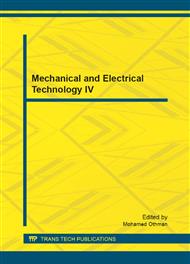p.1931
p.1935
p.1939
p.1944
p.1950
p.1954
p.1958
p.1963
p.1967
The Reseach on the Environment Factors of the Infrared Radiation for the Targets on the Ground
Abstract:
Infrared scene simulation is an important issue in the military field. Infrared scene simulation system can reproduce and simulate the infrared radiation characteristics of target and its background. Therefore, the analysis of the infrared radiation of target and scene features is very important for Infrared scene simulation. In this paper, we focus on the calculation and analysis of typical environmental factors of ground targets, including solar radiation, sky atmosphere radiation and ground radiation etc.. We also discuss how to calculate the infrared radiation of target in this paper. The results of this paper will be used for analysis of the infrared radiation and the simulation of the infrared scene of ground targets.
Info:
Periodical:
Pages:
1950-1953
Citation:
Online since:
November 2012
Authors:
Price:
Сopyright:
© 2012 Trans Tech Publications Ltd. All Rights Reserved
Share:
Citation:


